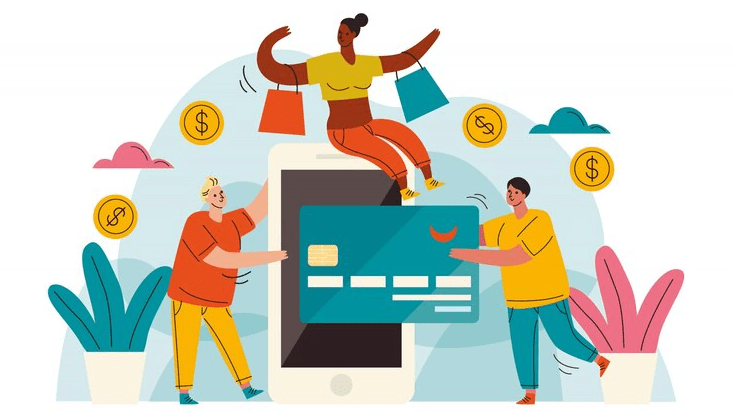In the world of personal finance, credit cards with cashback rewards have carved out a significant niche among American consumers. These financial tools not only offer convenience but also provide tangible benefits through cashback programs, making everyday purchases more rewarding.
With a myriad of options available, Americans have embraced cashback credit cards for their ability to turn spending into savings, effectively leveraging their purchasing power. This article explores the allure of cashback credit cards, the types available, their impact on spending habits, and tips for maximizing rewards.
The appeal of cashback credit cards

Why Americans love cashback rewards
Americans have a long-standing love affair with cashback credit cards, and it’s easy to see why. At their core, these cards offer a straightforward value proposition: spend money and receive a percentage back. This simplicity makes them highly attractive, especially compared to more complex rewards systems involving points or miles.
Cashback rewards translate directly into savings, whether applied to statement credits, direct deposits, or gift cards, making them versatile and practical. Moreover, cashback credit cards often come with attractive introductory offers.
Many issuers entice new customers with sign-up bonuses that can amount to substantial cash returns if certain spending thresholds are met within a specified period. These bonuses can provide a significant financial boost and add to the overall appeal.
The psychological impact
From a psychological perspective, cashback rewards create a positive reinforcement loop. Each purchase, regardless of its necessity or indulgence, feels more justified when there’s a financial return involved. This perception can significantly influence spending behavior, encouraging cardholders to use their cashback cards more frequently to maximize their rewards.
For many, the allure lies in the potential for everyday savings. Groceries, gas, dining, and online shopping are common categories where cashback percentages can range from 1% to 5% or more. Over time, these small percentages add up, providing a sense of accomplishment and financial prudence.
Types of cashback credit cards
Flat-rate cashback cards
Flat-rate cashback cards offer a consistent cashback percentage on all purchases, typically ranging from 1% to 2%. These cards are ideal for those who prefer simplicity and do not want to track spending categories. The uniform reward structure ensures that cardholders always know what to expect, making budgeting and financial planning straightforward.
Tiered cashback cards
Tiered cashback cards provide higher cashback rates for specific categories of spending, such as groceries, dining, or travel. These cards often offer lower rates for all other purchases. For example, a card might offer 3% cashback on groceries, 2% on dining, and 1% on everything else. This structure rewards those who spend heavily in particular areas, but requires more attention to spending habits to maximize benefits.
Rotating category cards
Rotating category cards feature quarterly categories that offer enhanced cashback rates, often around 5%, on certain types of spending like gas stations, supermarkets, or department stores. These categories change every three months, requiring cardholders to activate the categories and adjust their spending accordingly. While potentially lucrative, these cards demand a proactive approach to ensure that one benefits from the rotating bonuses.
Impact on spending habits
Cashback credit cards have a noticeable impact on spending habits. They encourage conscious spending by making consumers more aware of their purchases. Knowing that a reward awaits can lead to more deliberate and considered spending decisions. This awareness can translate into better financial habits overall.
However, there’s a flip side. The lure of earning cashback can sometimes lead to overspending. Consumers might justify unnecessary purchases under the guise of earning rewards. It’s essential to balance the desire for cashback with responsible spending to avoid accumulating debt, which can negate the benefits of the rewards.
Cashback rewards can also aid in budgeting. The clear rewards structure allows cardholders to track their spending more effectively. Many cashback credit cards come with tools and apps that provide insights into spending patterns, helping users to stay within their budgets and make informed financial decisions.
Maximizing cashback rewards
To truly maximize cashback rewards, some consumers employ a strategy of using multiple credit cards. This approach involves selecting cards with the best rewards for specific spending categories. For instance, one might use a card with high cashback on groceries for supermarket trips and another with superior rewards for dining out.
For those with rotating category cards, timing and activation are crucial. Keeping track of the quarterly categories and ensuring they are activated can significantly enhance rewards. Planning larger purchases to coincide with high-reward periods can also boost cashback earnings.
Sign-up bonuses can be a lucrative way to maximize rewards. By meeting the initial spending requirements, cardholders can earn substantial cashback within a short period. It’s important to plan significant expenditures, such as vacations or large household purchases, to align with the sign-up bonus requirements, thereby maximizing the return on spending.
